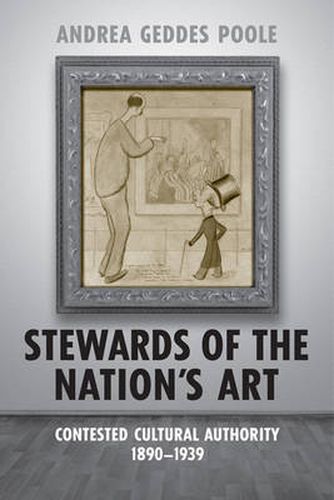Readings Newsletter
Become a Readings Member to make your shopping experience even easier.
Sign in or sign up for free!
You’re not far away from qualifying for FREE standard shipping within Australia
You’ve qualified for FREE standard shipping within Australia
The cart is loading…






Between 1890 and 1939, the groups of men involved in running Britain’s four main public art galleries - the National Gallery, the Tate Gallery, the Wallace Collection, and the National Portrait Gallery - were embroiled in continuous power struggles. Stewards of the Nation’s Art examines the internal tensions between the galleries’ administrative directors, the aristocrats dominating the boards of trustees, and those in the Treasury who controlled the funds as well as board appointments.
Andrea Geddes Poole uses meticulous primary research from all four of these institutions to discuss changing ideas about class, education, and work during this period. The conflicts between aristocratic trustees and administrative directors were not only about the running of the galleries, but also reflected the era’s strain between aristocratic amateurs and nouveau riche professionals. Stewards of the Nation’s Art is an absorbing study that explores the extent to which the aristocracy was able to hold on to cultural power in an increasingly professional and meritocratic age.
$9.00 standard shipping within Australia
FREE standard shipping within Australia for orders over $100.00
Express & International shipping calculated at checkout
Between 1890 and 1939, the groups of men involved in running Britain’s four main public art galleries - the National Gallery, the Tate Gallery, the Wallace Collection, and the National Portrait Gallery - were embroiled in continuous power struggles. Stewards of the Nation’s Art examines the internal tensions between the galleries’ administrative directors, the aristocrats dominating the boards of trustees, and those in the Treasury who controlled the funds as well as board appointments.
Andrea Geddes Poole uses meticulous primary research from all four of these institutions to discuss changing ideas about class, education, and work during this period. The conflicts between aristocratic trustees and administrative directors were not only about the running of the galleries, but also reflected the era’s strain between aristocratic amateurs and nouveau riche professionals. Stewards of the Nation’s Art is an absorbing study that explores the extent to which the aristocracy was able to hold on to cultural power in an increasingly professional and meritocratic age.